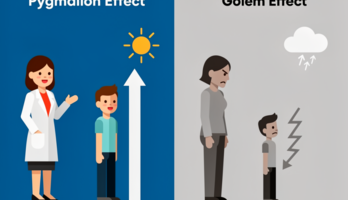42896 (687242), страница 2
Текст из файла (страница 2)
It may be possible to find an antiderivative symbolically, but it may be easier to compute a numerical approximation than to compute the antiderivative. That may be the case if the antiderivative is given as an infinite series or product, or if its evaluation requires a special function which is not available.
The following methods were described in this semester:
-
Rectangular method
-
Trapezoidal rule
-
Simpson's rule
-
Gauss-Legendre method
-
Gauss-Chebyshev method
2.2.1 Rectangular method
The most straightforward way to approximate the area under a curve is to divide up the interval along the x-axis between ![]() and
and ![]() into a number of smaller intervals, each of the same length. For example, if we divide the interval into
into a number of smaller intervals, each of the same length. For example, if we divide the interval into ![]() subintervals, then the width of each one will be given by:
subintervals, then the width of each one will be given by:
![]()
The approximate area under the curve is then simply the sum of the areas of all the rectangles formed by our subintervals:
![]()
The summary approximation error for ![]() intervals with width
intervals with width ![]() is less than or equal to
is less than or equal to
![]()
Thus it is impossible to calculate maximum of the derivative function, we can estimate integration error like value:
![]()
2.2.2 Trapezoidal rule
Trapezoidal rule is a way to approximately calculate the definite integral. The trapezium rule works by approximating the region under the graph of the function ![]() by a trapezium and calculating its area. It follows that
by a trapezium and calculating its area. It follows that

To calculate this integral more accurately, one first splits the interval of integration ![]() into n smaller subintervals, and then applies the trapezium rule on each of them. One obtains the composite trapezium rule:
into n smaller subintervals, and then applies the trapezium rule on each of them. One obtains the composite trapezium rule:

The summary approximation error for ![]() intervals with width
intervals with width ![]() is less than or equal to:
is less than or equal to:
![]()
2.2.3 Simpson's rule
Simpson's rule is a method for numerical integration, the numerical approximation of definite integrals. Specifically, it is the following approximation:
![]()
If the interval of integration ![]() is in some sense "small", then Simpson's rule will provide an adequate approximation to the exact integral. By small, what we really mean is that the function being integrated is relatively smooth over the interval
is in some sense "small", then Simpson's rule will provide an adequate approximation to the exact integral. By small, what we really mean is that the function being integrated is relatively smooth over the interval ![]() . For such a function, a smooth quadratic interpolant like the one used in Simpson's rule will give good results.
. For such a function, a smooth quadratic interpolant like the one used in Simpson's rule will give good results.
However, it is often the case that the function we are trying to integrate is not smooth over the interval. Typically, this means that either the function is highly oscillatory, or it lacks derivatives at certain points. In these cases, Simpson's rule may give very poor results. One common way of handling this problem is by breaking up the interval ![]() into a number of small subintervals. Simpson's rule is then applied to each subinterval, with the results being summed to produce an approximation for the integral over the entire interval. This sort of approach is termed the composite Simpson's rule.
into a number of small subintervals. Simpson's rule is then applied to each subinterval, with the results being summed to produce an approximation for the integral over the entire interval. This sort of approach is termed the composite Simpson's rule.
Suppose that the interval ![]() is split up in
is split up in ![]() subintervals, with n an even number. Then, the composite Simpson's rule is given by
subintervals, with n an even number. Then, the composite Simpson's rule is given by

The error committed by the composite Simpson's rule is bounded (in absolute value) by
![]()
2.2.4 Gauss-Legendre method and Gauss-Chebyshev method
Since function values are given in fixed points then just two points Gauss-Legendre method can be applied. If ![]() is continuous on
is continuous on ![]() , then
, then
![]()
The Gauss-Legendre rule ![]() G2( f ) has degree of precision
G2( f ) has degree of precision ![]() . If
. If ![]() , then
, then
![]() ,
,
where
![]()
It should be noted that even in case of two points method we have to calculate values of the function in related to ![]() ,
, ![]() , this values could be evaluated by linear interpolation (because it is necessary to avoid oscillations), so estimation of integration error become very complicated process, but this error will be less or equal to trapezoidal rule.
, this values could be evaluated by linear interpolation (because it is necessary to avoid oscillations), so estimation of integration error become very complicated process, but this error will be less or equal to trapezoidal rule.
Mechanism of Gauss-Chebyshev method is almost the same like described above, and integration error will be almost the same, so there is no reason to use such methods for the current problem.
Problem 3
3.1 Problem definition
It is well known that the third order Runge-Kutta method is of the following form
![]() ,
, ![]()
![]()
![]()
Suppose that you are asked to derived a new third order Runge-Kutta method in the following from
![]() ,
, ![]()

![]()
Find determine the unknowns ![]() ,
, ![]() ,
, ![]() and
and ![]() so that your scheme is a third order Runge-Kutta method.
so that your scheme is a third order Runge-Kutta method.
3.2 Problem solution
Generally Runge-Kutta method looks like:
![]() ,
,
where coefficients ![]() could be calculated by the scheme:
could be calculated by the scheme:
![]()
![]()
![]()
The error function:
![]()
Coefficients ![]() ,
, ![]() ,
, ![]() must be found to satisfy conditions
must be found to satisfy conditions ![]() , consequently we can suppose that for each order of Runge-Kutta scheme those coefficients are determined uniquely, it means that there are no two different third order schemes with different coefficients. Now it is necessary to prove statement.
, consequently we can suppose that for each order of Runge-Kutta scheme those coefficients are determined uniquely, it means that there are no two different third order schemes with different coefficients. Now it is necessary to prove statement.
For ![]() ,
, ![]() :
:

![]() ;
; ![]()
![]() ;
; ![]()
![]() ;
; ![]() ;
; ![]()
![]()

![]()
![]()
![]()
![]() ;
; ![]()

![]() ;
; ![]() ;
; ![]()
Thus we have system of equations:

Some of coefficients are already predefined:
![]() ;
; ![]() ;
; ![]() ;
; ![]() ;
; ![]() ;
; ![]() ;
; ![]() ;
; ![]()
![]()
![]()

![]()
Obtained results show that Runge-Kutta scheme for every order is unique.
Problem 4
4.1 Problem definition
Discuss the stability problem of solving the ordinary equation ![]() ,
, ![]() via the Euler explicit scheme
via the Euler explicit scheme ![]() , say
, say ![]() . If
. If ![]() , how to apply your stability restriction?
, how to apply your stability restriction?
4.2 Problem solution
The Euler method is 1st order accurate. Given scheme could be rewritten in form of:
![]()
If ![]() has a magnitude greater than one then
has a magnitude greater than one then ![]() will tend to grow with increasing
will tend to grow with increasing ![]() and may eventually dominate over the required solution. Hence the Euler method is stable only if
and may eventually dominate over the required solution. Hence the Euler method is stable only if ![]() or:
or:
![]()
For the case ![]() mentioned above inequality looks like:
mentioned above inequality looks like:
![]()
Last result shows that integration step mast be less or equal to ![]() .
.
For the case ![]() , for the iteration method coefficient looks like
, for the iteration method coefficient looks like
![]()
![]()
As step ![]() is positive value of the function
is positive value of the function ![]() must be less then
must be less then ![]() . There are two ways to define the best value of step
. There are two ways to define the best value of step ![]() , the firs one is to define maximum value of function
, the firs one is to define maximum value of function ![]() on the integration area, another way is to use different
on the integration area, another way is to use different ![]() for each value
for each value ![]() , where
, where ![]() . So integration step is strongly depends on value of
. So integration step is strongly depends on value of ![]() .
.
References
-
J. C. Butcher, Numerical methods for ordinary differential equations, ISBN 0471967580
-
George E. Forsythe, Michael A. Malcolm, and Cleve B. Moler. Computer Methods for Mathematical Computations. Englewood Cliffs, NJ: Prentice-Hall, 1977. (See Chapter 6.)
-
Ernst Hairer, Syvert Paul Nørsett, and Gerhard Wanner. Solving ordinary differential equations I: Nonstiff problems, second edition. Berlin: Springer Verlag, 1993. ISBN 3-540-56670-8.
-
William H. Press, Brian P. Flannery, Saul A. Teukolsky, William T. Vetterling. Numerical Recipes in C. Cambridge, UK: Cambridge University Press, 1988. (See Sections 16.1 and 16.2.)
-
Kendall E. Atkinson. An Introduction to Numerical Analysis. John Wiley & Sons - 1989
-
F. Cellier, E. Kofman. Continuous System Simulation. Springer Verlag, 2006. ISBN 0-387-26102-8.
-
Gaussian Quadrature Rule of Integration - Notes, PPT, Matlab, Mathematica, Maple, Mathcad at Holistic Numerical Methods Institute
-
Burden, Richard L.; J. Douglas Faires (2000). Numerical Analysis (7th Ed. ed.). Brooks/Cole. ISBN 0-534-38216-9.
















